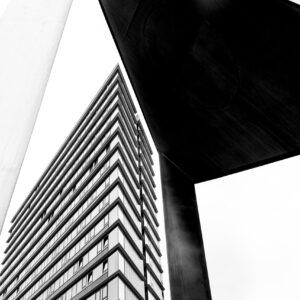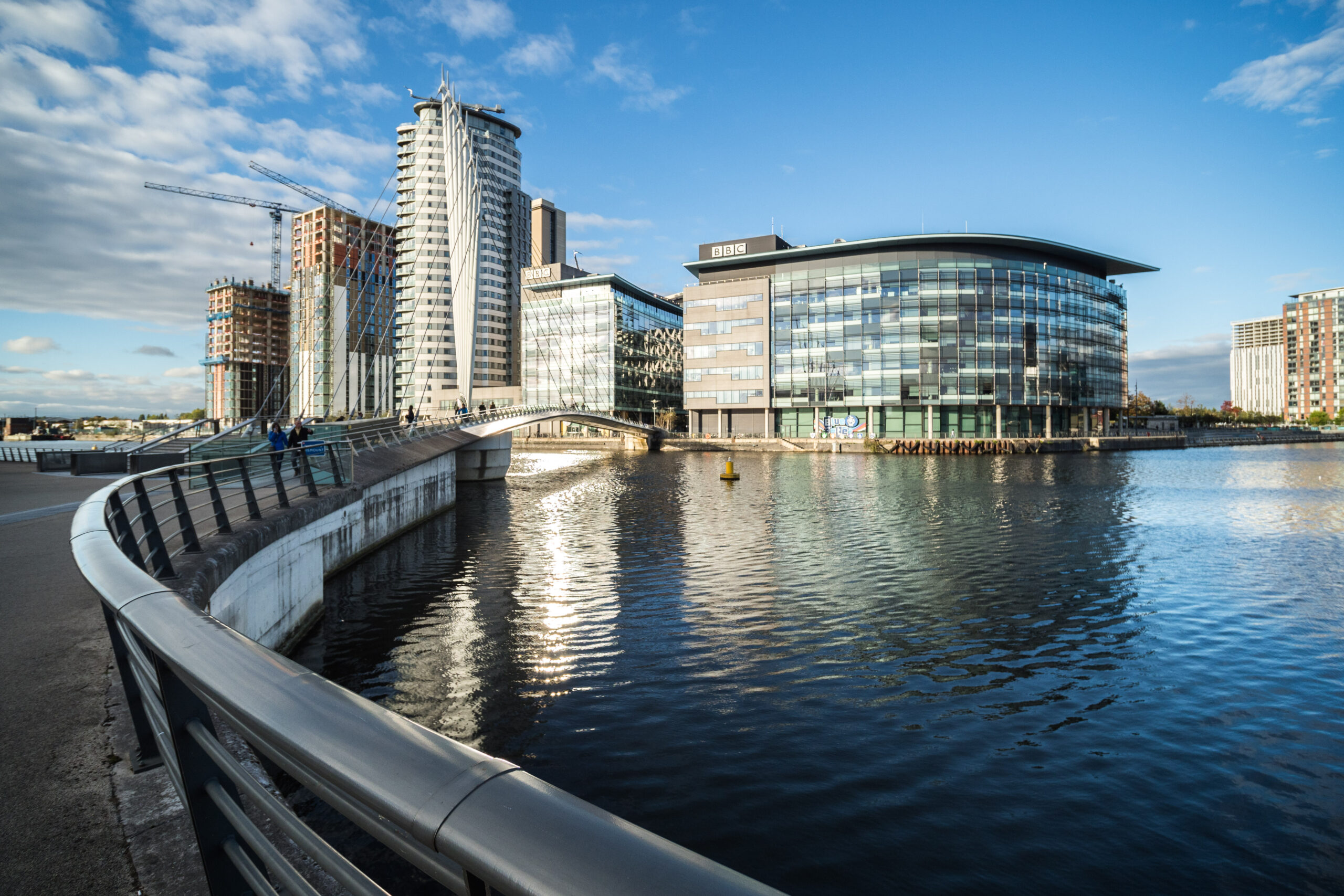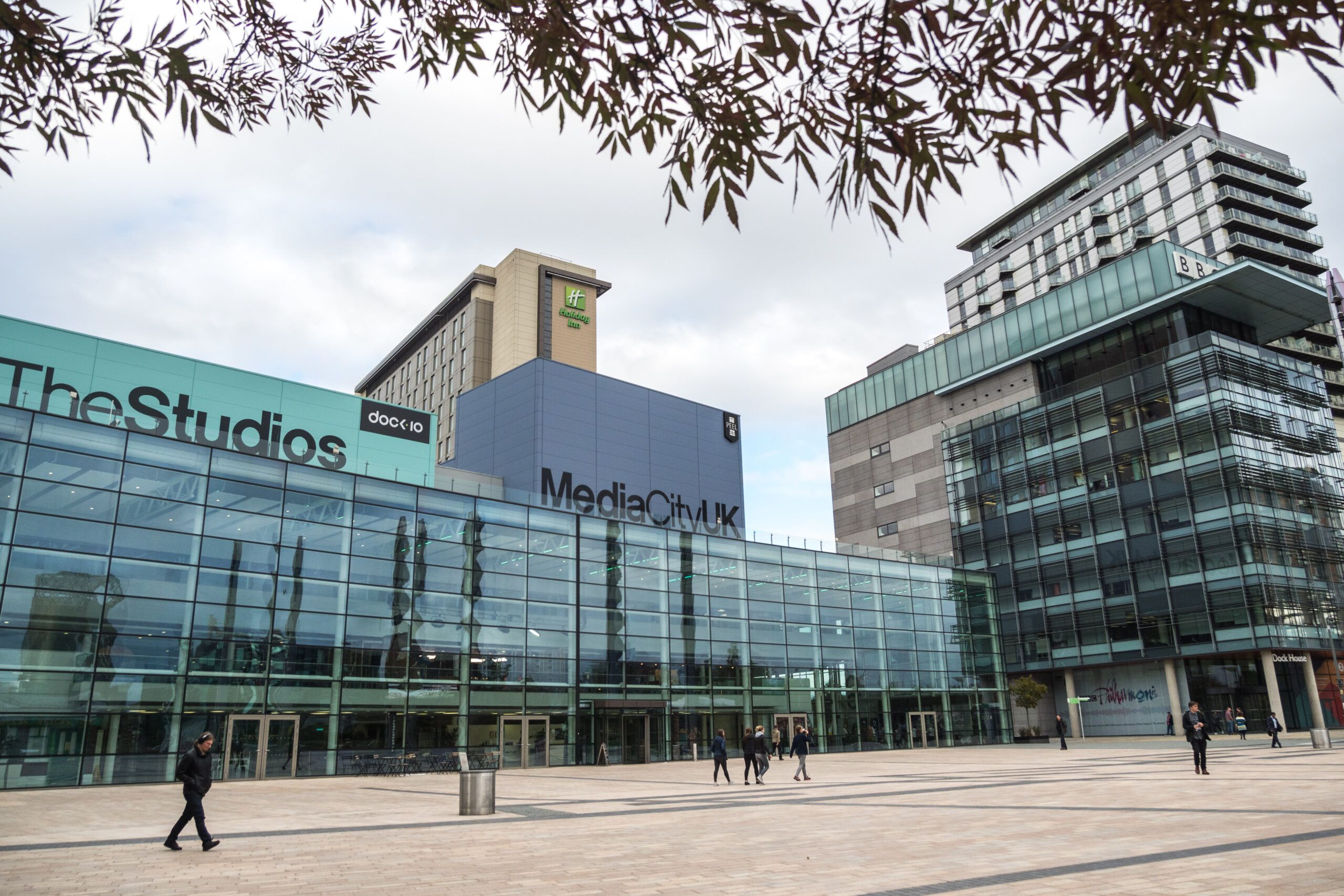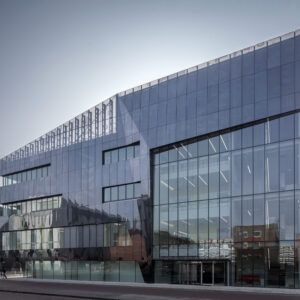
Media City
Location:
Main contractor:
Architect:
Complete:
Façade Scope:
Manchester, England
Peel Group, Bovis Lend Lease
Peel Media, Sheppard Robson
2007-2011
Performing static, fabrication and site project curtain walls.
SEND US A MESSAGE
CONTACT INFORMATION
15 Powązkowska St.
01-797 Warsaw
Poland
Do You have A Question? Do You want to know our offer?
WE ARE AT YOUR DISPOSAL!
MEDIA CITY UK
Country: UK, England
Location: Manchester
Purpose: media production, office, residential and service space
Main Contractor: Peel Group, Bovis Lend Lease
Architect: Peel Media, SR Sheppard Robson
Our contribution: Performing static, fabrication and site project curtain walls.
Complete: 2007-2011
The Media City complex is situated on a plot of 81 hectares on the banks of the Manchester Ship Canal in Manchester.
The project was developed by Peel Media, The main tenants are media organizations and the University of Salford. The areas of Salford Quays occupied by the development were previously part of Manchester's port and docks.
The BBC signaled its intention to relocate part of its studies and decentralize jobs from London to Manchester in 2004, and Salford Quays was selected in 2006. The Peel Group obtained a development permit in 2007, and the construction of the investment with its own power installation and communication network began in the same year. The main building of the complex - Quay House has become the Manchester headquarters of the BBC, other buildings are occupied by other media companies, mainly TV (ITV Granada, NEP, SIS Live) and the University of Salford. The MediaCity complex was developed in two stages. The first phase of 15 ha was completed in 2011, the second phase of development started in 2017 and is still ongoing.
PROJECT
In 2003, it was reported that the BBC is considering the transfer of part of the channels and production studios from London to Manchester. Proposals to relocate 1,800 jobs to Manchester were presented by BBC CEO Mark Thompson in December 2004. The Salford Quays facility was selected in June 2006 and was the last undeveloped site in the Manchester Docklands area that had been the subject of significant construction investment since the 1990s and turned into a residential and commercial center. The vision of Peel Group developers was to create a kind of media town capable of competing on a global scale with similar media centers in Copenhagen or Singapore.
In October 2006, a consent was issued for multi-purpose development on the premises of the facility, including residential, commercial, production and office space, and the approval of a detailed planning application. In May 2007, the BBC Trust approved the relocation of five London manufacturing divisions to Manchester.
DEVELOPMENT
The development begun in 2007 with Peel Gruop as main developer and Bovis Lend Lease as the constructor. Media facilities have been opened in stages since 2007. The first of them - Pie Factory was created in a renovated bakery. It includes three large sound studios suitable for theater productions and commercials. In 2011, the first stage of the media center construction was completed. The first program shot at Media City UK was "Don't Scare the Hare" in February 2011. That same month, BBC employees began a transfer to the new premises, which was finally fitted out in May 2011.
The main arteries of the media town are decorated in blue, white, pink, yellow, orange, purple and green colors, and the street design and colorful lighting of the surroundings constitute a kind of color code dividing the town into individual sectors. Gillespies landscape architects took on the task of regenerating brownfield sites to create public spaces. The focal point of the complex is the square and the landscape park by the canal, surrounded by buildings. Two separate areas of the square, The Green and The Stage, are able to hold events for up to 6,500 people. The BBC occupies three buildings: Bridge House, Dock House and Quay House, all designed by Wilkinson Eyre architects, with interior design by SR Sheppard Robson. Thanks to simple forms designed to harmonize with the look of the waterfront, the buildings provide 42,000 m2 of living space for employees and 31,000 m2 of office space.
The main buildings of the complex are Quay House, Bridge House, Dock House, Orange Tower (an 11-story glazed building with four types of cladding, including one made of complex aluminum with a diamond pattern). It houses the faculties of the University of Salford on three floors and the ITV Granada studio on seven floors. Pie Factory houses a television, film and commercial production facility. The Heart and Number One are the residential elements of the development, providing 378 apartments in two 22-story high-rise buildings. The communication network is one of the most advanced in the world, with over 20 million meters of fiber optic cable capable of delivering the Internet speed required for media production.















